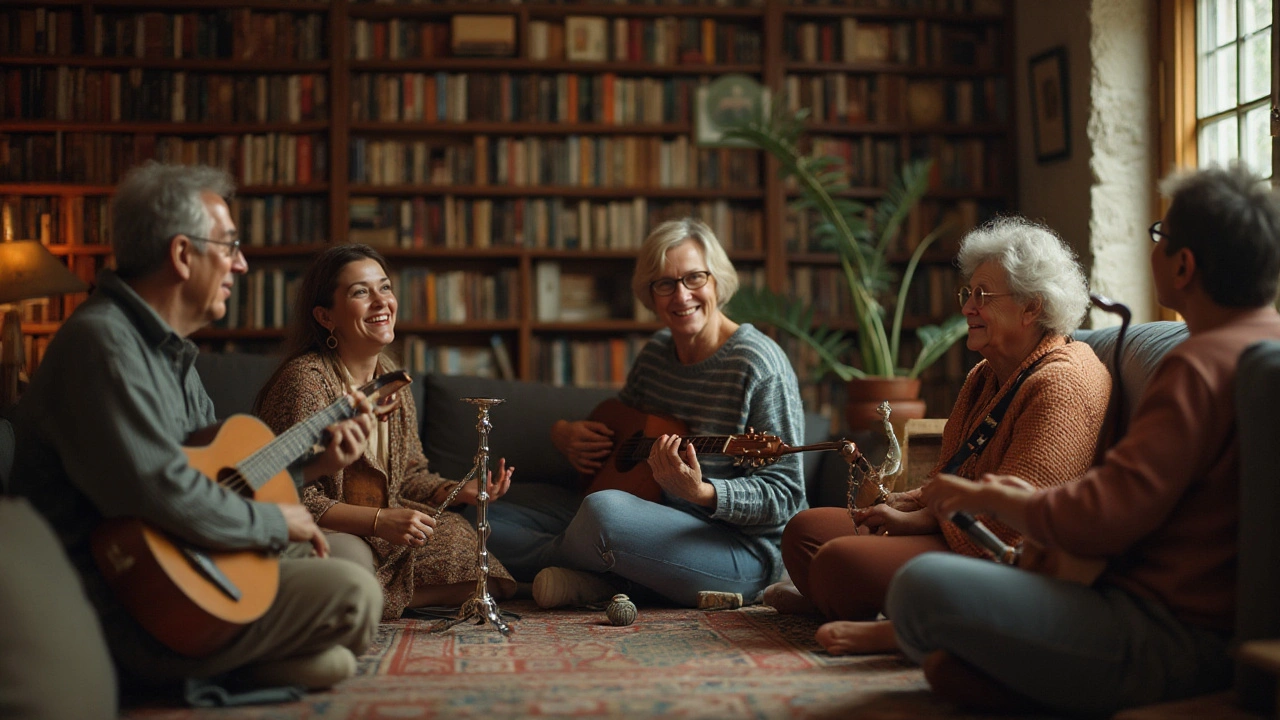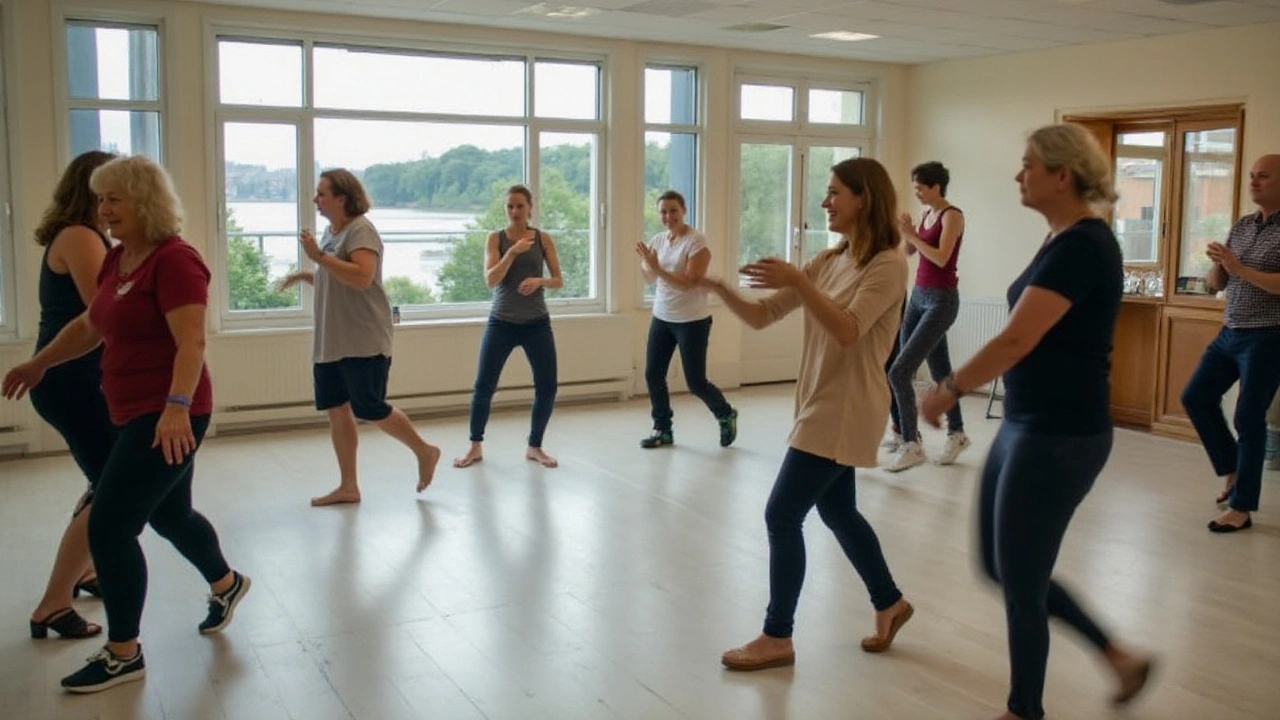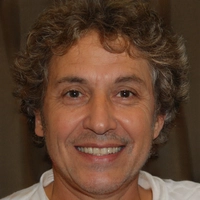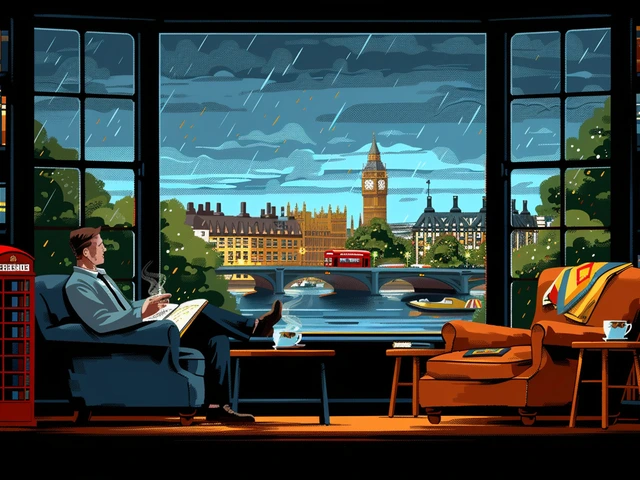Creative arts therapy stands as a testament to the profound connection between creativity and healing. Rooted in the idea that art transcends language and provides a unique avenue for expression, this therapeutic approach has gained momentum over the decades. From its humble beginnings, practitioners have harnessed the power of art to address emotional, mental, and even physical challenges.
Driven by pioneers passionate about the intersection of art and therapy, creative arts therapy has flourished into a respected domain within mental health care. Through exploring its origins and the contributions of key figures, we can appreciate the rich tapestry of techniques and practices that benefit individuals around the world today.
- Origins of Creative Arts Therapy
- Key Pioneers and Their Contributions
- Developments in Art Therapies
- Impact on Mental and Emotional Health
- Integration into Modern Therapy Practices
- Future Directions and Innovations
Origins of Creative Arts Therapy
The roots of creative arts therapy trace back to a period when society began recognizing the inherent power of artistic expression as a conduit for healing. Although art as a form of meditative practice has been present since the earliest human civilizations, its therapeutic applications became more pronounced during the turbulent times of the early 20th century. The aftermath of two world wars left many grappling with emotional scars, which conventional therapies often struggled to address. It was during this period that forward-thinking psychologists and artists began to explore new pathways to healing that embraced the arts.
In the late 1940s, figures such as Adrian Hill in the UK began to champion the integration of art into therapeutic settings. While recovering from tuberculosis, Hill himself realized that creating art profoundly affected his emotional recovery. His experiences laid the groundwork for art therapy. He documented these ideas, which sparked a wave of interest in using art to promote mental and emotional wellness. Hill's pioneering work signaled a shift in perspective, heralding a new age where the value of art extended beyond aesthetics to serve as a therapeutic tool.
Across the Atlantic, Margaret Naumburg, another key pioneer, was instrumental in developing art therapy as a formalized discipline. Drawing on her background in psychology and education, she introduced the idea that art could be a means of unconscious expression, similar to dreams. Naumburg's approach was grounded in the belief that through creating images, individuals could explore and resolve their innermost conflicts. Her methods provided a structure that allowed patients to visualize their emotions in a way that verbal language sometimes failed to capture.
"Art becomes a necessary type of action when speech is ineffective," Naumburg once said, capturing the essence of her therapeutic philosophy.
The burgeoning interest in expressive therapies was not limited to visual arts alone. Music began to emerge as another significant avenue for treatment, with professionals like E. Thayer Gaston advocating for its use in mental health settings. Gaston studied the effects of music on soldiers returning from combat, observing measurable improvements in their psychological states when exposed to structured music therapy sessions. This led to the formal development of music therapy programs, which complemented the goals of art therapy and broadened the scope of creative arts therapies.
Dance movement therapy also found its footing mid-century, thanks to visionaries like Marian Chace. Her work in dance and movement with psychiatric patients contributed to an understanding of how physical expression could assist in mental and emotional harmonizing. These early efforts laid a foundation that would later see creative arts therapy grow into a versatile discipline, incorporating various forms of artistic expression into therapeutic practice.
Society continued to embrace these new approaches, recognizing that art therapy, music therapy, and other expressive therapies offered unique benefits that traditional talk therapies could not. Today, we see this legacy manifest in a diverse range of methods that bring about healing in innovative ways, drawing from a rich past to pave the way for future advancements in the field.
Key Pioneers and Their Contributions
As we trace the evolution of creative arts therapy, it becomes apparent that several visionary individuals have left an indelible mark on the field. These pioneers recognized early on the therapeutic potential of creative expression and paved the way for its integration into mainstream mental health practices. Among them was Margaret Naumburg, who is often referred to as the mother of art therapy. Her approach viewed art as symbolic speech, bringing the subconscious into consciousness for healing. Naumburg believed that when traditional therapy failed to unlock emotions, art could be the key.
Another pivotal figure was Edith Kramer, who championed the link between art-making and psychological processes. Unlike Naumburg, Kramer emphasized the art process itself as therapeutic, suggesting that the act of creating was as important as what was created. Her work was foundational in establishing art therapy as an independent profession.
"Art is a reflection of one's internal life," Kramer asserted, highlighting art’s role in self-reflection and growth.Naomi Feil and her validation therapy opened doors for expressive arts to take center stage in dementia care, using art to engage with patients in non-verbal ways.
In the realm of music therapy, Paul Nordoff and Clive Robbins made substantial contributions. Together, they developed a therapy centered around the musical interaction between therapist and client, known as the Nordoff-Robbins approach. This dynamic method leverages the intrinsic musicality found in every person to aid personal growth. To bring music therapy into educational settings, pioneers like Juliette Alvin and Mary Priestley established frameworks that allowed music to flourish in special education and mental health environments. Awareness about dance and movement therapy was propelled by Marian Chace, who worked extensively with psychiatric patients, discovering that dance was a medium through which clients could express emotions buried deep within.
Healing through creativity took a bold new leap with the advent of drama therapy, championed by pioneers like Jacob Moreno, the founding father of psychodrama. Moreno's use of theatrical techniques to encourage clients to enact scenes from their lives fostered a new understanding of the relational dynamics affecting mental health. His work has influenced many drama therapists, who use reenactment as a powerful tool for transformation. Pioneer Anne Cumming further made notable strides with her creation of 'role theory', which helped clients explore different facets of their identity through acting.
The collective achievements of these key players afford us a glimpse into a past rich with innovation. Their contributions underscore the value of art in healing and how vital it has become in treating not just mental anguish but enhancing life's quality. Today, creative arts therapy continues to evolve, guided by the principles these pioneers established. As more studies corroborate the benefits of these therapies, their work finds new expression in contemporary practices, enriching the lives of countless individuals across diverse cultures and communities.

Developments in Art Therapies
The journey of art therapy has been astonishingly dynamic, rooted in the growing realization that creativity can transcend words and initiate profound healing. Initially, art therapy emerged from the corridors of hospitals and mental institutions, where art proved to be more than just a pastime; it became a crucial medium for expression and healing. Over the decades, dedicated pioneers have expanded the field, opening new avenues for understanding and utilizing creative expression to support mental, emotional, and even physical health. The transformative power of art was initially observed by educators and psychologists who noted significant changes in children who engaged with art. This observation set the wheels in motion for further exploration and application of artistic mediums in therapeutic settings. Soon, art therapy was recognized as a valuable complement to traditional methods, with art therapists working alongside psychologists and psychiatrists to offer a more holistic approach to healing.
As the field expanded, there came the need for formalizing training programs and establishing standards of practice. This initiative was spearheaded by national and international art therapy associations, aiming to ensure that practitioners were equipped with the skills necessary to use art effectively in therapy. The ongoing research into the neurological impact of creative arts has also played a role in solidifying its place within therapeutic communities. Scientists have uncovered fascinating links between artistic expression and neural activity, showing how engaging in creative processes can stimulate parts of the brain associated with emotions and memories. These findings have provided a scientific basis for the noticeable benefits experienced by those who participate in art therapy, bolstering its credibility and encouraging its integration into more traditional therapeutic practices.
Margaret Naumburg, often hailed as the mother of art therapy, famously asserted, "Art is a form of speech." Her conviction in the transformative potential of creative expression laid a strong foundation for future developments in the field.
Another significant development has been the adaptation of art therapies to cater to diverse populations, recognizing that different groups might benefit from different approaches. For example, with children on the autism spectrum, the sensory aspects of art can promote calming and aid in communication. Meanwhile, for veterans dealing with PTSD, creating art offers a non-verbal avenue to process traumas. This tailored approach underscores the field's flexibility and its commitment to meeting individual needs. Furthermore, the digital age has introduced new tools for creative expression, leading therapists to explore innovations such as digital art therapies. These modern methods align with the evolving way people interact with technology and art, making therapy more accessible to those who might find traditional methods less appealing.
The global reach of art therapy is evident in its adoption in varied cultural contexts, with practitioners drawing from local art traditions to enrich therapeutic practices. This cross-cultural exchange has furthered understanding and fostered a community that celebrates diverse interpretations and uses of art. Among the effective models being developed are those that incorporate music, dance, and drama, collectively known as creative arts therapy, thus broadening the spectrum of therapeutic tools. These integrative approaches have shown significant promise in addressing complex trauma and promoting community building. As we continue to unlock the mysteries of the human mind and emotions, it's evident that creative expression will remain a vital component of therapeutic endeavors, offering hope and healing in ways that conventional methods may not.
Impact on Mental and Emotional Health
Creative arts therapy has made notable strides in impacting mental and emotional health, offering a beacon of hope to those navigating the tumultuous waters of psychological distress. The process begins by encouraging individuals to express emotions that often escape words. Through mediums such as painting, dance, music, and drama, people unearth layers of feelings, providing insight into their emotional life. This uncovering is not only cathartic but offers a visual and tangible form of communication that can often jumpstart the healing process. The safe, creative space that this therapy provides allows participants to explore these vulnerable parts of themselves without fear of judgment, fostering a sense of acceptance and understanding.
The effectiveness of creative arts therapy has been supported by a growing body of research. Studies show that engaging in these therapies can reduce symptoms of depression and anxiety, enhance self-esteem, and improve overall mood. A study published in the Journal of the American Art Therapy Association found that individuals participating in art therapy experienced significant reductions in their perceived stress levels. What's particularly interesting is that the act of creating can alter neurological pathways, tapping into the brain's ability to adapt and change. This neuroplasticity is at the heart of how creative arts therapy can help in rewiring thought processes and behavior patterns.
Pioneering Advances in Therapy
Moreover, these therapies do not merely stop at understanding emotions but actively aid in resolving them. They engage the brain's left and right hemispheres, creating a dialogue between the emotional and logical centers. This holistic engagement results in improved problem-solving skills and better emotional regulation. The act of creating something tangible, from a sketch to a song, allows individuals to claim ownership over their healing journey. This empowerment can significantly enhance self-esteem and self-worth, crucial in combating the pervasive impacts of mental health issues."Creative arts therapy offers a window into one's emotional world, providing invaluable insights and fostering resilience," noted therapist and author Cathy Malchiodi in her work. These therapies are accessible and adaptable, meaning they can be customized to suit individual needs, making them an invaluable tool in the therapeutic toolbox.
Incorporating creative arts therapy into mental health treatment plans has become an increasingly sought-after option, due in part to its versatility and positive outcomes. It is particularly beneficial for individuals who may not respond well to traditional talk therapies. Celebrities and experts have highlighted how art therapies have positively changed their lives, bringing this once niche practice into mainstream consciousness. As society continues to understand and appreciate the immense potential of these therapies, their application is only likely to expand, potentially altering the landscape of mental health care for the better.

Integration into Modern Therapy Practices
The evolution of creative arts therapy into a central component of modern therapeutic practices is a testament to its transformative power in enhancing mental wellness. As a holistic approach, it merges art forms like painting, music, and dance with psychotherapeutic techniques, offering a unique pathway to healing that is being embraced in various clinical settings today. In psychotherapy, it provides an alternative to conventional verbal communication, thereby reaching individuals for whom self-expression is challenging when limited to words alone.
One significant leap in integrating these therapies came with healthcare institutions incorporating them into regular treatment plans. Hospitals, rehabilitation centers, and wellness clinics globally recognize the therapeutic potential in artistic expression, providing programs that tap into this ancient connection between creativity and healing. Research studies highlight its impact, with patients reporting reductions in anxiety and depression following sessions involving music or expressive arts. According to a study published in the Journal of Health Psychology, patients who engaged in art therapy experienced a notable improvement in emotional resilience and a decrease in stress-related symptoms.
Technology has also played a transformative role in the accessibility of arts therapies. With advancements in digital technology, therapists can now utilize online platforms to reach a broader audience. Virtual art therapy sessions have emerged, providing flexibility and accessibility to those unable to attend in-person appointments due to health or logistical reasons. This digital shift democratizes the art therapy practice, allowing therapists and patients to overcome geographical and physical barriers, thus broadening the reach of the healing benefits of art. As we adapt to changes in how healthcare is delivered, online offerings become essential tools in providing continuity of care.
"Art therapy catalyzes emotional growth and insight," says Dr. Cathy Malchiodi, a leading figure in the field. "It fosters a deeper connection with oneself and catalyzes transformation in ways that verbal therapy alone may not reach." Her pioneering efforts have underscored the necessity of integrating arts therapies within mental health frameworks, encouraging a culture of acceptance and exploration of these non-traditional methods.
The wide acceptance of art therapy across various age groups and conditions highlights its versatility. Programs designed for children often use play therapy techniques, while adolescent and adult sessions may incorporate more structured forms of expression like mandala drawing or improvisational dance. This adaptability not only helps address diverse therapeutic needs but also allows practitioners to tailor the experience to match their clients' individual preferences, ultimately leading to more effective outcomes.
A growing body of evidence supports the inclusion of creative arts therapies across traditional medical and psychiatric settings. Their incorporation not only complements medication and traditional psychological approaches but also enhances patient engagement and satisfaction. Providing a creative outlet within the therapeutic process enriches the client's journey toward recovery, offering both short-term relief and long-lasting benefits. By continuing to integrate these practices, the therapeutic community offers diverse tools for healing, ensuring comprehensive care that acknowledges the integral role of creativity in human life.
Future Directions and Innovations
The future of creative arts therapy is as dynamic and vibrant as the art forms it encompasses. As the world continues to change, so too does the landscape of therapeutic arts, reflecting shifting cultural paradigms and technological advancements. In recent times, there's been a remarkable increase in the integration of digital tools within the realms of art therapy. With virtual reality and digital art platforms burgeoning, therapists are exploring new modalities for facilitating expression and healing. These tech elements not only offer innovative experiences but also broaden access, reaching individuals who might be geographically or physically constrained.
Moreover, research is delving deeper into understanding how different forms of art impact the brain and emotions. Through neuroimaging and other scientific studies, we're beginning to see empirical evidence backing the age-old belief in art's therapeutic power. This growing body of evidence is proving invaluable, helping to solidify the standing of art therapies within the broader mental health field. Additionally, the push towards more inclusive practices is gaining momentum. Therapists are seeking to make their approaches more culturally sensitive and relevant, acknowledging the diverse ways people engage with art and its meanings.
Improvements in Art Therapy Techniques
Explorations into how music therapy, dance therapy, and similar practices can be further refined are ongoing. Therapists are actively sharing knowledge and engaging in collaborative efforts to combine different therapeutic modalities for a more holistic approach. This interdisciplinary spirit is leading to unique and effective strategies that cater to varied individual needs. Additionally, practitioners are putting more emphasis on tailoring therapies to address specific issues such as trauma, anxiety, and PTSD, recognizing the powerful role art can play in processing complex feelings and experiences.
"Art enables us to find ourselves and lose ourselves at the same time," said renowned writer Thomas Merton. This quote resonates deeply within the context of art therapy, reinforcing the notion that creative expression can be both a journey of self-discovery and a respite from the demands of everyday life.
Impact of Cultural Evolution on Art Therapy
Cultural shifts are continuously influencing the development of these therapies. As global awareness and understanding evolve, therapists are paying greater attention to incorporating indigenous art forms and traditional practices into their work. This not only honors the origins of these art forms but also enriches the therapeutic process by offering clients more relatable and meaningful ways to connect with their own healing journey. In parallel, public awareness about mental health is growing, which is fostering a greater acceptance and recognition of art therapy as a valuable treatment method.
Lastly, while charting future paths, it's essential to focus on education and professional development within the community of art therapists. The need for ongoing training and the establishment of rigorous, accredited programs is critical. By doing so, we ensure that future practitioners are well-equipped with the knowledge and skills necessary to help their clients effectively. These initiatives not only uphold the quality of care but also advance the field's stature.






